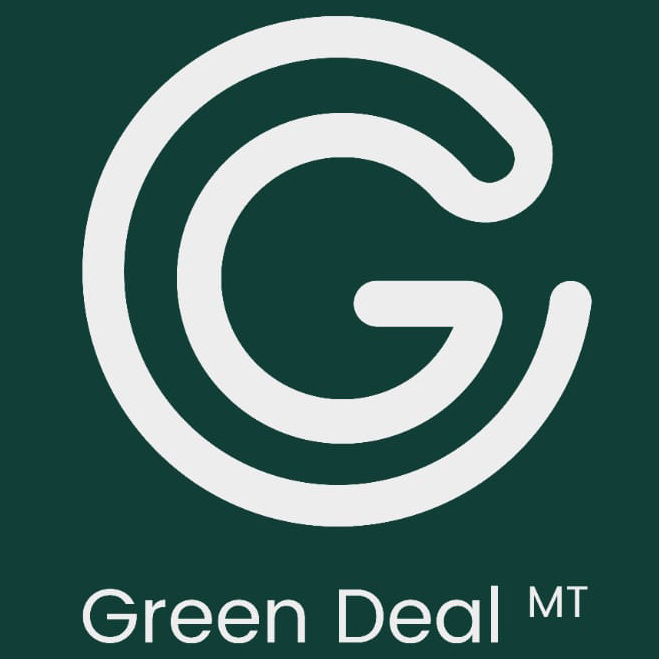Introduction
Selling fish in the market begins with marketable-sized and good-quality fish. Cultivated juveniles (or fingerlings) and fry, as free-swimming fish, are stocked into a rearing habitat. This provides them with an optimum environment to grow rapidly yet healthily. The young fish, including Bluefin Tuna (BFT), can be obtained through wild capture, or by rearing in fish pens. For wild capture, fishing activities are regulated by local legislation, and operations take place within a 25 nautical-mile zone.[1]
For successful cultivation, a fish farmer spawns the fish in captivity. Once the eggs hatch, they are reared until they enter the fry stage. This does not apply to BFT, since the fish are caught in the wild. Importance is given to optimum cultivation conditions in the incubators until fertilisation and during hatching. Once the fry grow into a suitable size, they are placed in bigger pens and richly fed until reaching the desired selling market size.
Locally, there are currently six fully licensed fish farms, as floating cages, in different locations. Most BFT farms are situated approximately six kilometres off the eastern coast of Malta, in roughly ninety metres deep sea. Two farms rearing juvenile seabream, seabass and meagre, are grown in inshore nursery sites.
Marketing of BFT varies a lot, usually ranging between 200kg and 500kg. The size of sea bream and sea bass is between 350g and 600g. However, there are some farms that grow them to a bigger size, around 800g to 1.2kg. The catches are freshly traded on ice, or frozen. Carriage is by airfreight to the market location within twenty-four hours from harvesting.
The EU Common Fisheries Policy (CFP)[2] defines aquaculture as:
The rearing or cultivation of aquatic organisms using techniques designed to increase the production of the organisms …beyond the natural capacity of the environment, where the organisms remain the property of a natural or legal person throughout the rearing and culture stage, up to and including harvesting.
Hence, aquaculture implies the breeding and farming of marine living organisms in non-natural systems, using various techniques. This aims at increasing fish stock, contrasted with the normal capacity raised typically without human interference. The system begins the moment the fish are captured or reared, until their harvesting.
Local fish farming is a sub-category of aquaculture since it solely deals with the farming of fish. Reared in local fish farming are the BFT, which make up around eighty percent of total fish production. These are known as capture-based species. Other closed-cycle species include sea bream and sea bass.
The importance of Sustainable Aquaculture in Malta
For many years, we have observed aquaculture mature into a successful venture, aiming at growing high-quality marketable fish, within a sustainable Blue Economy. There are several reasons why aquaculture in Malta should be given due consideration. First, it enhances and diversifies household food supply, to improve nutritional levels. Additionally, the Maltese economy benefits as it increases employment. This improvement of supply of fish, through aquaculture, reduces the imbalance between fish imports and exports. From an environmental perspective, aquaculture preserves aquatic biodiversity through re-stocking and recovery of species. With further knowledge on the subject, coupled with better marine environmental awareness, the pressure on fishing is reduced. The continuous evolution of this industry warrants further analysis, backed by science-based knowledge, to improve marine ecosystems.
A need for legislative reform?
The EU legislative framework many times points towards intended policy reform and simplifying administrative procedures. This is mostly noticed in the CFP infringement procedure regulation, the Marine Strategy Framework Directive and the Strategic Guidelines. However, recently, the local industry has observed no amendments in the laws and regulations that private companies follow. With legislation remaining stagnant, despite clear needs for change, it may provide a way out for companies to deprioritise EU environmental goals and local sustainable objectives, and instead focus solely on economic motives.
Essentially, therefore, how can Maltese aquaculture truly be more sustainable, through legislative reform?
Bearing in mind that BFT farming accounts for eighty percent of total aquaculture production revenue, one must give this sector its due importance. Improved feeding practices, and transportation of currently used baitfish feed, should be put into effect. The very essence of the definition of sustainable development of aquaculture, specifies the need for enhanced fisheries’ practices and management.
Feeding through a barge and not using a feeding cage, is a more sustainable practice. At present, baitfish is fed after being left suspended in a feeding cage under water, which increases marine pollution, namely an oily slime or sludge. By switching to barges, as a modern mode of feeding, fish farmers can adapt the manufacture of the barge to the needs of the fish farm and its species. Barging, as opposed to feeding cages, is a more efficient and reliable feeding system for aquaculture farming operators, offering a safe and seaworthy feeding option, that will boost sustainable production.
Local legislation can also be amended, to include better measures or management practices related to fish sites, to avoid litter and sea pollution. Hence, rules aimed at decreasing slime in marine waters should increase. The fish farm operator should always target avoiding nutrient concentrations due to overfeeding, to minimise pollution around the fish sites. Additionally, the operator should have the duty of placing booms around the fish cages to stop the slime from spreading into open waters. It should also be the operator’s role to carry out intense cage surveillance, and collect waste generated after feeding. In this regard, it is crucial therefore, that the roles and responsibilities of fish farm operators are provided as a list, and in detail, within the primary law on aquaculture.
Due to the constant improvement of food science, alternative feeds may be recommended. The national Aquaculture Operations Regulation[3] regulates sea operation permits. These permits should ideally specify what feed will be utilized by fish farming operators. As the law stands, operators are currently given a free and open selection.
Locally, BFT are fed on baitfish, caught from the wild. Thus, unless the wild baitfish comes from sustainable sources, there is a risk that the industry runs into an unsustainable feeding trap, with an increase of pressure to feed the BFT with baitfish.[4] As an alternative, if baitfish is replaced with manufactured fish feed, or at least replaced in part, by partly plant protein-based sources, the pressure on wild baitfish would decrease, and overall, environmental degradation will decline. This contains many advantages for sustainability to persist.
Enhanced aquaculture research and development,[5] is trending more towards these specialised diets for the BFT industry. Implementation of these diets in the Maltese BFT setting will be critical in the forthcoming years. This is because, as has happened with other aquaculture species, for example seabass and seabream, feeding fish with manufactured feed is more sustainable, and also economically viable.
Therefore, slime will stop being released by the fish farms once this type of feeding is replaced. Secondly, manufactured feeds have a much more efficient food conversion ratio, therefore less feed is required to produce the same amount of BFT. Also, manufactured feeds can be tailored to contain all the necessary nutrients that BFT require. Since manufactured feeds occupy less volume, shipment costs are reduced. In fact, baitfish feed contains around 70% water content, whereas the manufactured feed contains less than 40% water content.[6] In case of freezer space and storage of feed, the manufactured feed will require half the amount of space that baitfish feed needs, saving half the storage costs.
BFT aquaculture in Malta relies on the capture-based industry by purse seining, caught from the wild and fattened in monitored offshore cages.[7] Yet, by steering the industry towards the production of BFT from hatcheries and spawning facilities, through regulation amendments, sustainability can be better guaranteed. Thus, BFT farmers will not need to focus solely on fishing for wild BFT, which demands for protection due to overfishing. Instead, hatching tuna in captivity offers a self-prolonging option of aquaculture. Positively, at present, Malta is at the forefront of BFT egg production, however, no specific local law promotes and regulates its legal procedure.
With hatcheries actively in place, improved knowledge can be obtained to diversify fish cultivation. Furthermore, this method could be used to replenish any diminished stocks of any species in the environment. For this to be done in an environmentally friendly manner, adequate planning by the ERA needs to be carried out. These ideas can first be addressed in the upcoming MNSP, so that more research is provided, which can then aim to implement laws in the future.
Concluding Remarks
Overall, the substance of Maltese law on aquaculture mostly and properly implements EU rules governing sustainable aquaculture production. However, other salient laws and the structure of local law fall short of ensuring the overall sustainability. This cannot achieve a complete self-governing legislative standard that the EU sets. Furthermore, the local legal structure does not provide an optimum foundation for essential concepts of aquaculture production, further demoting sustainability in aquaculture procedures.
The recommendations suggested may encourage the competent local authorities to safeguard the principle of sustainability, in accordance with EU benchmarks, to a greater extent. There is a demand for continuous reviews and harmonising of the law, within the context of investment in sustainability. Clarity in role responsibilities, which supports monitoring, inspection and surveillance of production, will strengthen the aquaculture administration.
Functioning regulations locally in force, are expected to be adequate and up to date, to promote and maintain the local sustainability of the marine environment around the Maltese islands.
[1] Territorial Waters and Contiguous Zone Act, Chapter 226 of the Laws of Malta
[2] Council Regulation No 1380/2013 on the Common Fisheries Policy [2013] OJ L 354/22
[3] Aquaculture Operations Regulations S.L. 425.12
[4] However, baitfish feed is currently certified by the Marine Stewardship Council; an international non-profit organisation, which ensures that seafood supplies are caught from sustainable sources
[5] Like in Japan and USA
[6] “MSFD Initial Assessment Economic Sectors Report” <https://era.org.mt/wp-content/uploads/2019/05/MSFD-InitialAssessment-EconomicSectorsReport.pdf> accessed April 20, 2022








